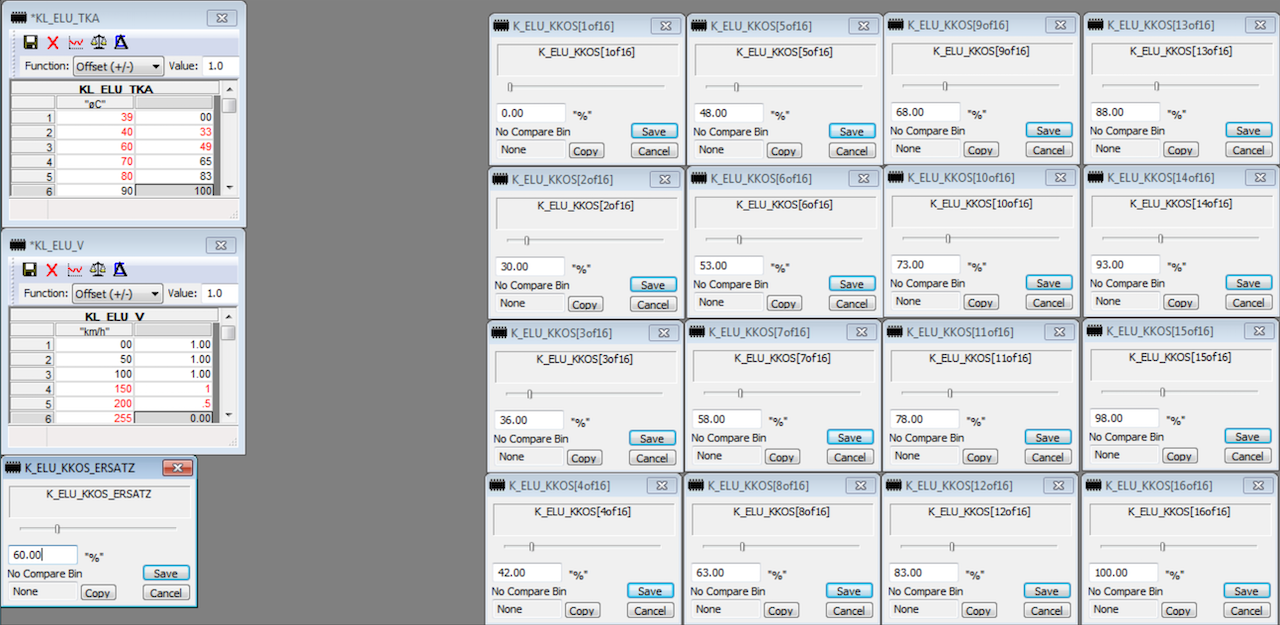-
Notifications
You must be signed in to change notification settings - Fork 34
Aux Fan Speeds
KL_ELU_TKA: (degC, Fan Speed)
KL_ELU_V: (Vehicle Speed, Fan Speed Ratio * KL_ELU_TKA)
K_ELU_KKOS_ERSATZ: (Fan speed when there is no IHKA communication)
K_ELU_KKOS_Xof16: (Fan Speed based on AC Load)
Change KL_ELU_TKA values to requested fan speed. From there that value is multiplied by the KL_ELU_V value, which will be your Aux fan speed.
When removing AC, zero the values in K_ELU_KKOS_ERSATZ and E_ELU_KKOS_Xof16), so that fan does not run at the 60% default.

Courtesy of Terraphantm: The DME takes the radiator outlet temperature and pushes into the function KL_ELU_TKA (seen below). If the radiator outlet temperature is bad, the DME takes the value from the block sensor, subtracts 10, and pushes that into the function. The output from the function is the duty cycle determined from the coolant temp; the output is held in a register until later.
Next, the DME tries to figure out what the AC's requested duty cycle is. If the compressor is off or the intake air temperature is less than 10ºC, it assumes 0. If there's an error on the IHKA side, the DME assumes 60%. Otherwise the IHKA well send a message over the can-bus (through the instrument cluster) requesting 1 of 16 speeds. The DME takes that number, and uses one of the K_ELU_KKOS[*of16] values. The resulting value is stored in a register.
The two registers are compared, and the DME picks the larger number. So if the speed request due to the coolant temp is higher than the request due to the AC, it will pick that.
Next, the DME checks the intake air temperature. If it is 60ºC or higher, the requested speed will be set 60% unless the previously calculated value is higher than 60%.
Once the requested duty cycle is settled, the DME will calculate a factor based on the vehicle speed. That factor will be multiplied by the requested duty cycle to get the final duty cycle, and this is what the fan speed is set to. In the case of the M5, the factor is 1.0 until the vehicle reaches 120 km/h, and reaches 0 by 150 km/h. Between 120 and 150, the factor will be an interpolated value.